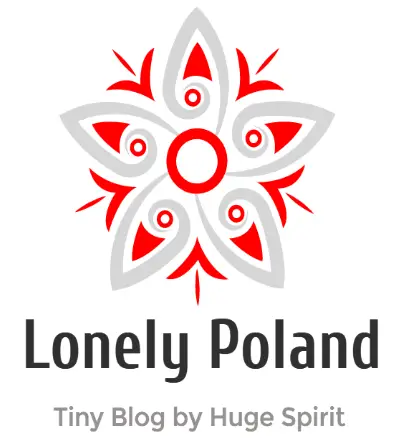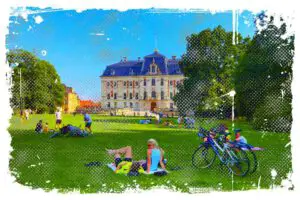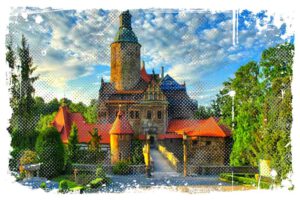Everyone knows the Louvre in Paris, the National Gallery in London, the Prado in Madrid, and the MoMA in New York. But I think it is worth to say that, even though we may not have as valuable collections, we also have nothing to be ashamed of.
From the data of the General Statistic Office (GUS), I can find out which Polish institutions are most popular among visitors.
Museums in Poland – The Phenomenon Behind The Popularity
General Statistic Office published data on the number of people visiting Polish museums. Which ones turned out to be the most popular? And what is the phenomenon behind their popularity?
1. Museum of King Jan III’s Palace at Wilanów
Almost three million people visit the baroque royal residence each year, built in the late 17th century by Jan III Sobieski on the outskirts of Warsaw.
↳ PRO TIP: Do you like traveling? Then before you buy any ticket or book an attraction, check if it's available in this worldwide Viator Database. You may save a lot of money and time. No need to thank me :)
You can simply walk around the beautiful park and garden or visit the palace interiors once inhabited by Jan III Sobieski and Queen Marysieńka – admire rococo frescoes, magnificent furniture, and view historical costumes and everyday objects.

Various exhibitions, concerts, and workshops for children and adults take place in the palace itself and the surrounding historical buildings. For several years, the palace and park have transformed into a spectacular garden of light in winter, featuring multimedia mappings, light mazes, and installations.
The gardens underwent a thorough revitalization, completed in 2012, while the conservation work in the palace is still ongoing (a continuous process lasting for many years).

Nearby, the access roads and sidewalks have been renovated, new benches, lanterns, and information boards have been installed. And, among other things, these efforts have made the Palace in Wilanów the most frequently visited museum institution in the country.
2. Łazienki Królewskie (Royal Baths) Museum in Warsaw
More than two million guests cross the gate of Łazienki Królewskie in Warsaw every year. Like the Palace in Wilanów, Baths is also a royal residence located in a park. The architectural complex located along the Royal Route was established at the end of the 18th century by King Stanisław August Poniatowski.

Today, Łazienki Królewskie is an immensely popular park (the most liked place for walks in the city) and a complex of historical buildings – from the Palace on the Isle to numerous garden pavilions and an amphitheater.
Museum functions are combined with utility functions – concerts, exhibitions, and meetings are held here. You can row across the pond in front of the Palace on the Isle, and next to the Museum of Hunting and Horsemanship, there is a stable offering horseback riding.

Łazienki Królewskie is not only a park and historical buildings. It is also home to many species of animals. During a walk, you can encounter peacocks, squirrels, hedgehogs, foxes, and even deer.
3. Auschwitz-Birkenau State Museum in Oświęcim
This well-known museum, even beyond the borders of Poland, is a reminder of the horrific wartime experiences. It is not a place for relaxation and pleasant leisure, but a kind of memento meant to make people around the world aware of what people deceived by a sick ideology are capable of.

Auschwitz-Birkenau Museum is a symbolic place. Here you can see preserved camp pavilions, memorabilia of prisoners, and learn about genocidal procedures.
There are also meetings of representatives of different cultures and nationalities – including those who did not experience the drama of World War II.

The camp in Oświęcim serves as a metaphor for the atrocities of war and tries to teach what needs to be done to prevent them from ever happening again.
4. Wawel Royal Castle in Krakow
On the list of most frequently visited museums in Poland, royal residences occupy high positions. Wawel Castle is one of them. Unlike in Warsaw, the Krakow castle is not surrounded by a park but by a complex of buildings and a defensive wall.

Next to the famous castle, known not only for its collections but also its beautiful Renaissance courtyard, the cathedral filled with priceless works of art (including the tombs of kings) is also an important place.

The Sigismund Chapel is a masterpiece of Renaissance art. Wawel Hill is covered with buildings of various characters and scales, built at different times. Entering the area surrounded by walls is a journey back in time – you can feel the spirit of a truly ancient era.
5. Żupy Krakowskie Museum in Wieliczka
It was already known in the Neolithic period (3,000 years BCE) that valuable salt could be obtained in Wieliczka, near Krakow. The first mining shafts were dug here at the turn of the 12th and 13th centuries.

The Wieliczka Salt Mine, which together with the Bochnia mine has belonged to the żupy krakowskie since the 1970s, is listed as a historical monument. In 1978, the Wieliczka Salt Mine was inscribed on the UNESCO World Heritage List (as one of the first 12 sites in the world), and in 2013 the Bochnia mine was also added to it.
The deepest corridor of the Wieliczka mine is located 327 meters underground, and the total length of all underground corridors reaches 300 kilometers. While visiting the Wieliczka mine, you can not only see the excavations but also real works of art – salt sculptures (e.g., the statue of Nicolaus Copernicus), richly decorated chapels (the largest of them, St. Kinga’s Chapel, is 54 meters long, about 18 meters wide, and about 12 meters high), chambers dedicated to various historical figures (the oldest preserved chambers in Wieliczka date back to the 17th century).
6. Royal Palace in Warsaw
Every year, over half a million people visit the Zamek Królewski (Royal Palace) in Warsaw. This is no ordinary monument. It was completely rebuilt in the 1970s after being destroyed during the war.

Although it was opened to the public in 1984, the castle never existed in its current form before. It consists of parts from different eras, but nobody questions its historical significance. It was recreated based on historical documents and all preserved original parts, from materials to interior furnishings.
Stanisław Lorentz, the then director of the castle, saved these parts by transporting and hiding them in September 1939.

Together with Warsaw’s Old Town, the Zamek Królewski is listed as a UNESCO World Heritage Site, a unique example of the reconstruction of an almost completely ruined monument.
7. Museum of the History of Polish Jews POLIN in Warsaw
In 2014, 350,000 visitors were attracted to the newest museum on our list, the Museum of the History of Polish Jews POLIN in Warsaw. The award-winning building, designed by Lahdelma & Mahlamäki Architects, quickly bedcame a part of the city’s landscape.
Its glass structure with an impressive, wave-like entrance hall has many fans, thanks to a rich program of temporary exhibitions, concerts, film screenings, conferences, and workshops.

The museum’s underground houses a permanent exhibition that tells the story of a thousand years of Jewish presence in Poland. Similar to the Warsaw Uprising Museum, the POLIN Museum’s exhibition engages multiple senses, uses new media, and virtually contains no exhibits. Mirosław Nizio’s team designed both exhibitions.
If you are there, it is worth saying that the exhibition will give you a deep insight into the history of Jews in Poland, something I believe is crucial for understanding the country’s past.
And if you want to enrich your experience, don’t miss out on the various events organized by the museum. I can tell you, it’s a visit that will leave a lasting impression.
8. Warsaw Uprising Museum
The Warsaw Uprising Museum in Warsaw is relatively new but it already draws half a million visitors each year.

Opened in 2004, it was the most modern museum of its kind in Poland at the time. Instead of traditional display cases, it offers visitors a modern space where the atmosphere is as important as the items of great historical value.
Some traditionalists criticize this approach, allowing visitors to „feel” history instead of just narrating it (for example, you can walk through canals in the Warsaw Uprising Museum), but the popularity of such museums shows that visitors enjoy this kind of „play with history”.
9. Malbork Castle Museum
The Malbork Castle’s construction began in the 13th century. However, its significant expansion started in 1309 when the Grand Master of the Teutonic Order decided to move his center of power there. The castle then expanded into a defensive complex consisting of three parts: High, Middle, and Low Castle.

It is worth saying that the Malbork Castle is the world’s largest brick castle. Since the 1960s, it has functioned as a museum, showcasing not only its impressive brick architecture but also collections of art, architectural details, ceramics, militaria, and textiles.
Interestingly, the castle also houses a unique collection of amber artworks, and since the early 1960s, it has hosted the International Biennial of Contemporary Exlibris.
10. The District Museum in Toruń – One Of The Oldest In Poland
The The District Museum in Toruń is considered one of the oldest museums in Poland, with historical exhibits accessible to the public since the 16th century.
Since 1931, the museum has been located in the beautiful Gothic Old Town Hall on the Market Square, which itself is worth a visit.

Inside, you can find archaeological collections, medieval and modern art, artistic crafts, militaria, and Far Eastern art objects.
But the Muzeum Okręgowe in Torun is not just the exhibition in the Town Hall. It has several branches and subsidiaries that are hugely popular among tourists.
The Museum of Gingerbread is besieged by sweets lovers, while fans of distant lands should visit the Kamienica pod Gwiazdą, which houses collections of non-European cultures, and the Traveller’s Museum named after Tony Halik with a vast collection of memorabilia from the most famous Polish traveler.
An important monument is the Nicolas Copernicus House, a magnificent Gothic townhouse where the great astronomer was probably born. If you are charmed by the beauty of Torun, you should visit the Torun History Museum in the Dom Eskenów to learn about the history of this beautiful city.
References:
- https://podroze.onet.pl/gdzie-na-weekend/najpopularniejsze-muzea-w-polsce-piec-najchetniej-odwiedzanych-miejsc/kpmfwb9
- https://www.museo.pl/
- https://pl.wikipedia.org/wiki/Muzea_w_Polsce



